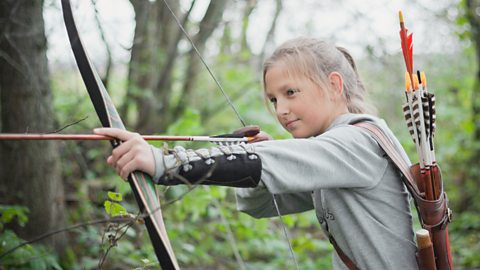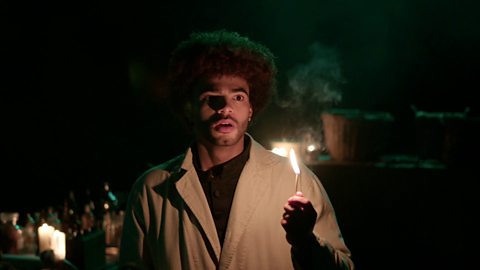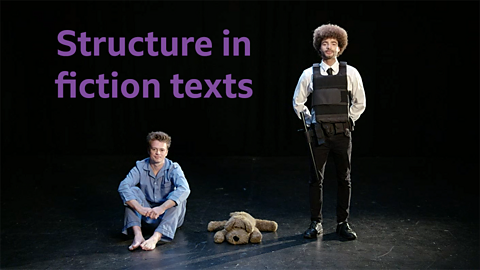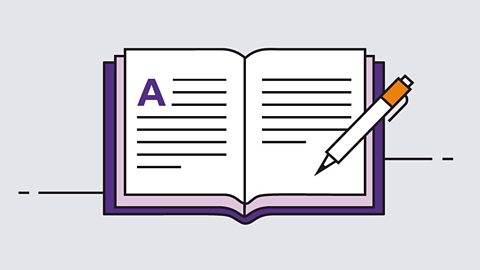Introduction to comparing fiction texts
- A fiction text is usually formed from the writer’s imagination. Although it may be realistic, it may not be based on factual events.
- Comparing fiction texts helps you to focus on their similarities and differences.
- Features that can be compared might include setting, genre, characterisation and narrative perspective.
Learn how to compare two pieces of fiction in script form
What is a fiction text?
A text is a piece of writing. A text can be labelled as either fiction or non-fiction. Non-fiction tends to deal with the real world, for example a news article, blog, speech, letter or diary. Fiction texts are usually based on the writer’s imagination, and include:
- novels
- short stories
- film, television or play scripts
- poetry
Focusing on similarities and differences

When comparing fiction texts look at the similarities between the texts - things those texts have in common. You can also contrast texts and focus on the differences between them - things that set the texts apart from each other.
You could start by comparing and contrasting features, such as:
- setting - when and where is each text set?
- genre - is it a thriller, detective novel, a ghost story, a romance, something else?
- characterisation - the character’s behaviour, appearance, beliefs, experiences, dialogue
- narrative perspective - who is telling the story?
- language choices - the writer’s choice of words, phrases, imagery
- narrative structure - the order of events in the text

Why is comparing fiction texts useful?
Comparing fiction texts is an effective way to help you gain more of an understanding of each text.
For example, comparing the way two characters are presented may help you understand how the writer wants the reader to feel about each of the characters. One text can help to shine a spotlight on another, enabling you to extend your understanding and analysis.
Comparing texts can also deepen your understanding of the different times the texts are set in. For example, comparing a novel set in the Victorian times with a novel set in the 21st century could reveal lots of differences in the values of those societies.
Structuring your comparison
When comparing two texts, don’t make the mistake of writing all about one then all about the other and only comparing them at the end. This can mean you miss chances to make good points, and in an exam might lose you marks if you run out time to do your comparison at the end.
Instead, pick one aspect of the texts at a time and write about what this is like in both books.It might appear they are very different – one novel is set in the past and one in the present, for example – but perhaps despite this they share some common features – perhaps both are set by the sea and show some similar aspects of coastal life even though they are set years apart.
Try to be detailed and see if you can suggest reasons for the similarities and differences you find in texts. Was the author trying to make a particular point? Do the features you find show something important about the characters or the worlds they live in?
It can sometimes be tricky to structure your writing when making a comparison. It’s helpful to have some sentence starters and linking words that compare:
- Similarly
- Likewise
- Equally
There are also helpful sentence starters and linking words that contrast:
- In comparison
- However
Comparing fiction texts - an example

The Hunger Games and The Maze Runner are both science fiction narratives with dystopian themes, featuring societies with frightening belief systems or extremely harsh rules, but the stories are told in very different ways. The Hunger Games is dominated by a strong female character, whereas in The Maze Runner the main character is male. The Hunger Games is written from the perspective of the female character, which makes the reader feel very close to her experiences. In comparison, The Maze Runner is written in the third person, using pronouns like ‘he’ and ‘they’, so the reader may feel a close connection to more than one character.

Remember
Comparing fiction texts can often help you notice things that you might not have considered about a piece of writing. You may compare texts which offer a different way of looking at the same theme, or handle narrative in very different ways. Comparison can help to extend and deepen your understanding and analysis of texts.
Quiz
Find out how much you know about comparing fiction texts in this short quiz!
Where next?
Discover more from around Bitesize.
More on Critical reading
Find out more by working through a topic
- count4 of 4

- count1 of 4


